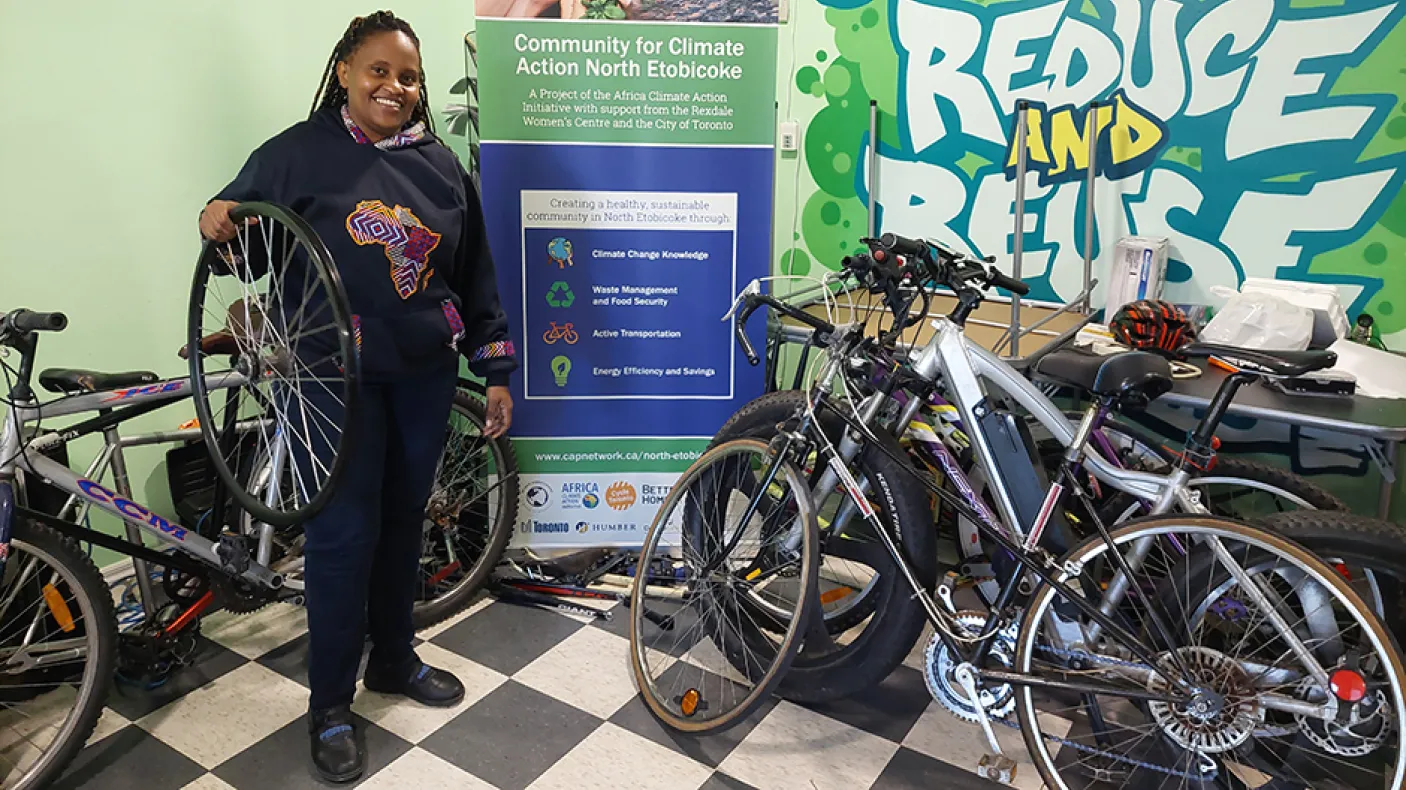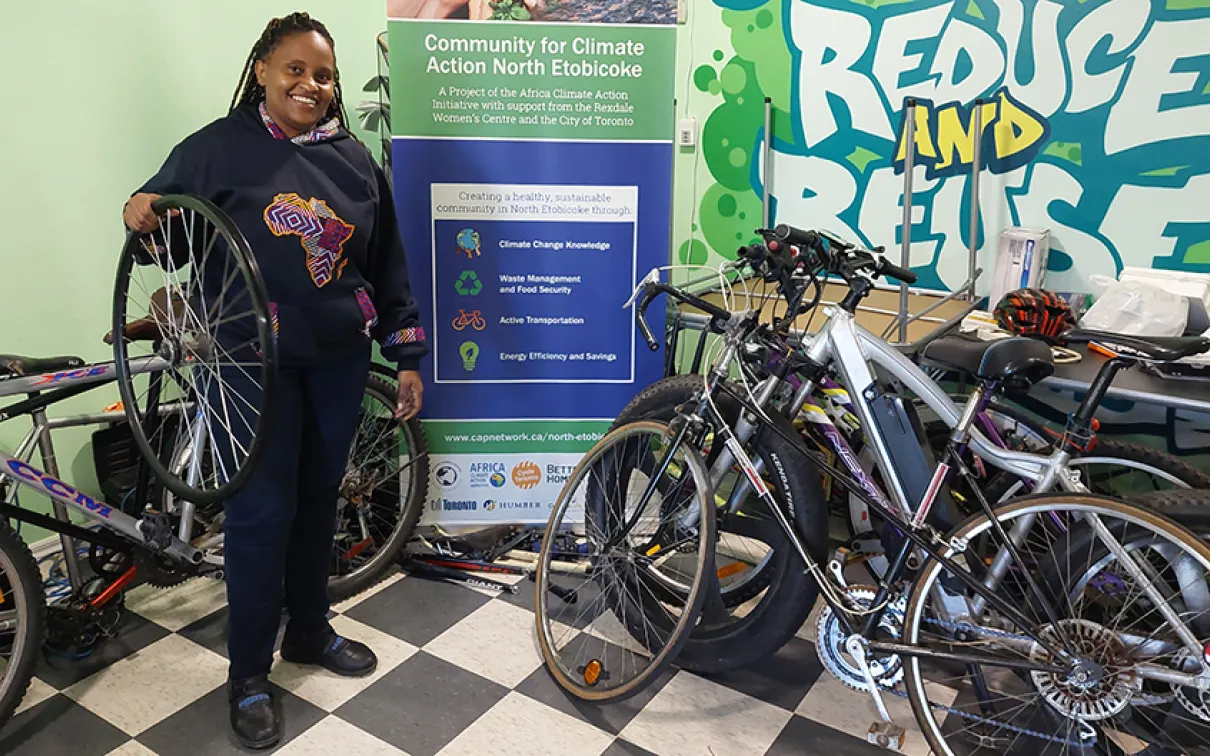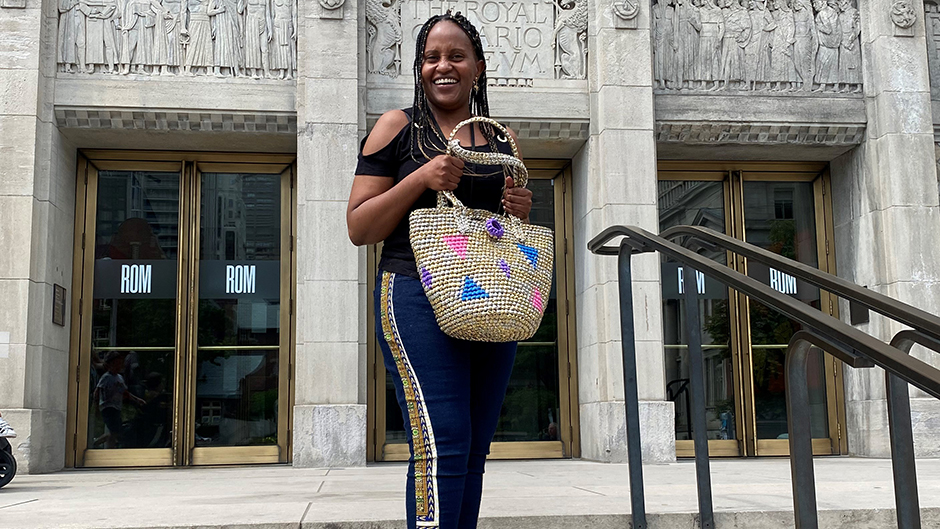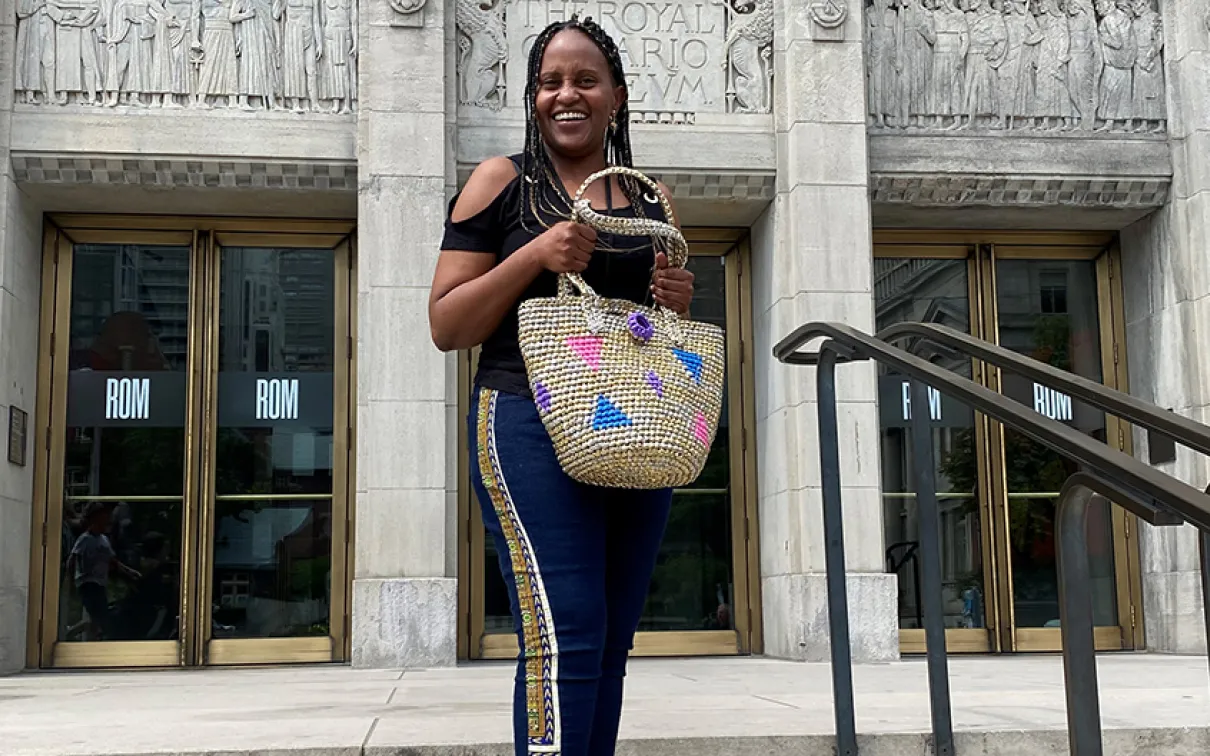What Gives ROM’s Climate Change Project Coordinator Hope?
Sarah Kamau on ROM’s green future and the little things that make a big difference.
Published
Category
By age 15, Sarah Kamau was already a budding environmental activist
By age 15, Sarah Kamau was already a budding environmental activist.
Her interest in climate change was first sparked by a geography teacher in high school. Soon after, she and her friends were yanking water hyacinth—an “invasive plant reviled for clogging rivers”—from Lake Victoria in Kenya. “Of course, we didn’t do much,” she recalls fondly. “But at least we did something.”
Later, as a young woman at the University of Nairobi, she was swept up in the Green Belt Movement led by the Nobel Prize-winning Dr. Wangarĩ Muta Maatha. But the moment that truly galvanized her arrived in 2011, while she was working at the Dadaab Refugee Camp in Kenya.
Fleeing from a devastating famine in Somalia, half a million refugees poured into Kenya. Their stories left Kamau heartbroken. “Many of them had to trek long distances without food and water,” she says. "Others talked of abandoning their old and young in the wilderness after they became frail and weak due to a lack of food and water."
“That really pushed me to start thinking about the ways we can address climate change,” she continues. So, she committed herself fully to the cause—and hasn’t looked back since.
After years of community organizing in Kenya, Kamau is now the Climate Change Project Coordinator at ROM. Here, she coordinates climate change programs, teaches youth, leads climate change projects, and helps make the Museum more sustainable.
Kamau’s job is funded through the newly established Allan and Helaine Shiff Curatorship of Climate Change, which is held by her boss, Dr. Soren Brothers. And like him, she has no blueprint to work from. She’s building it all from scratch, making it up as she goes. But as she told me, that’s a good thing.
This is Sarah Kamau.
On Walking the Walk
One of the first things Sarah Kamau shows me is her bag. It’s big and bright gold, adorned with pink and blue triangles, and held by a chunky handle. Oh, and it’s made entirely of recycled plastic bags.
“This is from a project I did back in Kenya,” she says. There, she worked with an organization helping women with HIV/AIDS. “Most of these women were marginalized,” she says. “They didn’t have any source of income.”
So, Kamau’s team taught them to make marketable goods. “We made a lot of baskets, table mats, jewelry boxes, and many other things,” she says. That includes her handbag, which was crocheted from recycled plastic bags.
For Kamau, small decisions like carrying this bag add up to a big difference. Plus, it’s about walking the walk—a lesson she brings to the Museum, too. “We cannot be teaching the public about sustainability and climate change, and then not doing anything about it at ROM or as individuals,” she says.
That’s why much of her time is spent working with everyone from Dr. Soren Brothers to the Green Team on improving sustainability within the organization, including the Museum’s galleries and exhibitions.
On Climate Anxiety and Hope
Even a cursory glance at the latest climate news is enough to fill someone with despair. But Kamau has never been one to surrender to hopelessness. So, I ask her what advice she has for someone eager to make a difference but unsure how to get started.
“One step at a time,” she says. “And start small.”
Take fashion, she says. It accounts for around “10% of annual global carbon emissions.” And even a single pair of jeans requires over 7,000 litres of water to produce. So, how do you extend the lifecycle of your clothes? If you’re Kamau, you get creative.
She shows me the jeans she’s wearing—dark blue denim, with a line of ornately patterned fabric running along the side of each leg, which she added to expand the jeans. "People think it’s fashionable,” she says. “But it was just to extend the lifecycle so that it could fit me as I gained weight.”
Kamau also takes solace in how much environmental work is already happening, from local community organizations mobilizing the public on climate change to intergovernmental programs mitigating flooding in Toronto to federal grants for green energy and building retrofits. “That is what gives me hope,” she says. “We are not just sitting down. We are all making a difference.”
On Building an Inclusive Environmental Movement
When Kamau first arrived in Toronto in 2019, she had no idea how to sort her waste. “Which one is the green bin? The black bin? The blue bin?" She figured if she was confused, then other newcomers surely were, too.
“The City of Toronto is talking about climate change and environmental management, and there’s this particular group of people who’ve been left out,” she tells me. So, she came up with an environmental program to reach new Canadians that was soon funded by the City of Toronto. They started with balcony gardening and fixing up old bicycles, which they gave away for free, then expanded from there.
While the organization she founded continues to flourish, Kamau is now incorporating that big-tent philosophy into her work at ROM. “I don’t think there’s any group that is hard to reach,” she says. It’s simply a matter of understanding where each group comes from, then working with them using an inclusive, bottom-up approach.
On ROM’s New Climate Change Tours
In April, ROM held its first-ever climate change tour—a 45-minute trip through the Museum that includes everything from ancient fossils to endangered species. “We are trying to show that climate change has been there from time immemorial,” says Kamau. But what makes climate change unique today, she adds, is human interference by burning fossil fuels.
“We are also addressing how human beings, and even animals, are adapting to climate change.”
To an outsider, the idea of having such a tour may seem grim, even depressing. But like Kamau, ROM’s climate change tours are full of hope—and solutions.
ROM’S 45-minute climate change
ROM’S 45-minute climate change tours are offered every first and third Thursday of the month, starting at 11:00 am in Chen Court. No sign-up required!
The Allan and Helaine Shiff Curatorship of Climate Change is one of 35 curatorships at the ROM and one of seven endowed curatorships to receive matching funds by the Louise Hawley Stone Charitable Trust.





